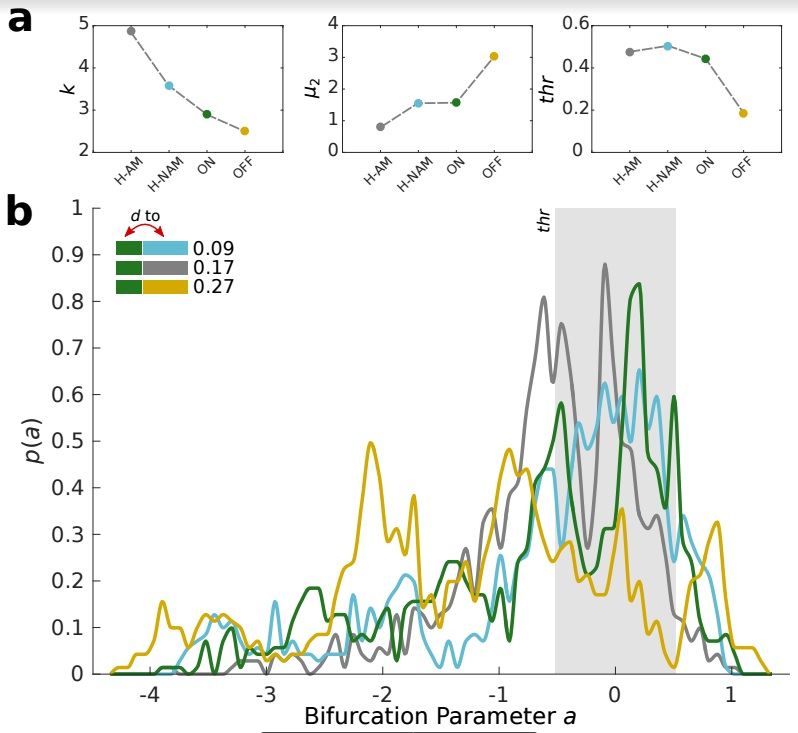Deep brain stimulation alleviates the symptoms of Parkinson’s disease
Deep brain stimulation alleviates the symptoms of Parkinson’s disease
A study by an international team of scientists describes the functional mechanisms of deep brain stimulation (DBS) through computational models. DBS has been used to relieve the symptoms of more than 150,000 Parkinson’s disease patients.
 Deep brain stimulation, or DBS, has relieved the symptoms of more than 150,000 patients suffering from Parkinson’s disease. However, the functional mechanisms of this treatment have not yet been clarified. Now, thanks to the recent efforts of an international group of researchers, these mechanisms have been described in an article published this August in the journal Scientific Reports, entitled Uncovering the Underlying mechanisms and whole-brain dynamics of deep brain stimulation for Parkinson’s disease.
Deep brain stimulation, or DBS, has relieved the symptoms of more than 150,000 patients suffering from Parkinson’s disease. However, the functional mechanisms of this treatment have not yet been clarified. Now, thanks to the recent efforts of an international group of researchers, these mechanisms have been described in an article published this August in the journal Scientific Reports, entitled Uncovering the Underlying mechanisms and whole-brain dynamics of deep brain stimulation for Parkinson’s disease.The research was designed and conducted by Victor Saenger and Gustavo Deco, members of the Center for Brain and Cognition (CBC) at UPF, and Morten Kringelbach, of the University of Oxford in the United Kingdom. The results show that treatment using DBS in the subthalamic nucleus in patients with Parkinson’s disease balances global brain dynamics.
In the study, the researchers measured brain activity using the Functional Magnetic Resonance imaging technique in ten patients with Parkinson’s disease before and during DBS treatment. Through large scale mathematical models of the brain they have managed to show the global effects created by such stimulation. Artificial stimulation has also been applied in a simulated brain exposing the brain regions that show greatest treatment efficacy.
“This method helps us to understand what regions are responsible for changing the brain activity of patients with Parkinson’s disease to the type of activity found in healthy persons. It is the first study to show that DBS treatment, despite being localized, has a global effect”, states Victor Saenger, a researcher of the Center for Brain and Cognition at UPF and first author of the article. And he adds that “this method allows us also to understand why DBS treatment is so effective. Now we can find more effective stimulation regions without the need for clinical interventions”.
According to Morten Kringelbach of the University of Oxford, “the perspective of this study shows that we are now able to use computational models of brain activity to simulate the effects of brain stimulation and thus predict the result. In the long term, we hope to use these methods to make personalized interventions to achieve individual benefits”. However, he warns that “it is very important to consider the risks and ethical aspects of using something as invasive as the DBS method”.
Parkinson’s, a disease that affects 10 million people around the world
Parkinson’s disease is a neurodegenerative disease that affects at least 10 million people around the world. To date there is no known definitive cure, although it has been shown that the DBS method in the subthalamic nucleus has relieved the symptoms of more than 150,000 patients. The effectiveness of this region was discovered almost three decades ago, in 1989, by neurosurgeon and professor Tipu Aziz of the University of Oxford, one of the co-authors of this paper. Together with professor Alan Crossman, of the University of Manchester, they found that injuring the STN in non-human primates eased the symptoms of the disease. Despite its high clinical efficacy, the functional mechanisms had remained hidden until now.
The use of computational models of the brain on a large scale
The major technological breakthroughs of recent years allow accurately modelling human brain activity globally. These models use information about brain structure and function measured using MRI to replicate and simulate this activity on a computer. These, in turn, have become progressively good predictors of brain activity. This unique feature allows exploring new areas of stimulation rationally and in a reasoned way.
Reference work:
Victor Saenger et al.: ”Uncovering the Underlying mechanisms and whole-brain dynamics of deep brain stimulation for Parkinson’s disease”, Scientific Reports, August 2017. DOI:10.1038/s41598-017-10003-y
